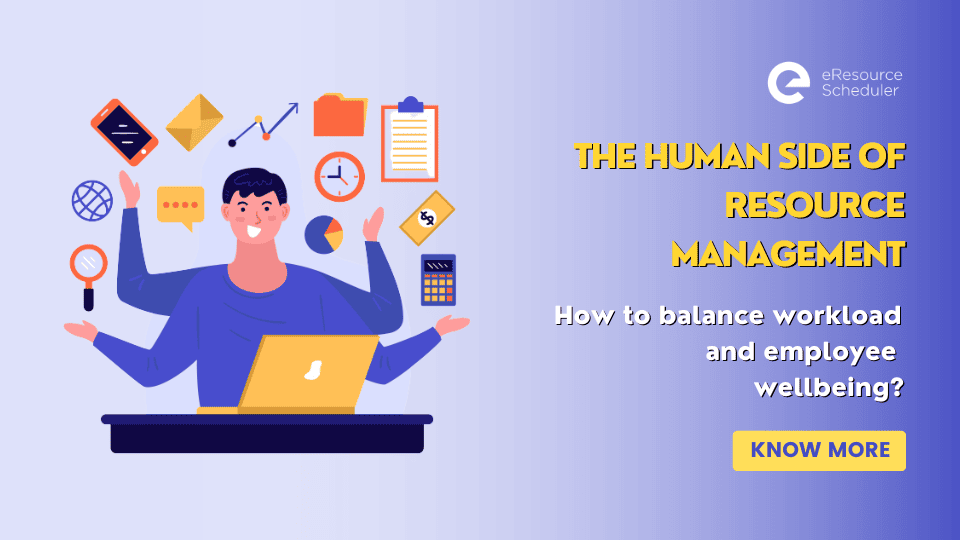
Your business might take pride in being a great place to work. But, despite having the best intentions, the way the work is structured at your organization may be detrimental to the health and well-being of the employees. Workplace demands and working circumstances are key sources of stress. According to Harvard Research, how the job is structured can significantly impact the health and well-being of employees and the cost of their medical treatment.
For both physical and emotional health, balance is essential. The long-term effects of an unstable environment are adverse to productivity.
An unbalanced work-life balance starts a snowball effect that leads to tension, exhaustion, and eventually indifference at work. Luckily, a solution guarantees that everyone can continue to be productive, knowledgeable, and relevant in the highly competitive employment market. Resource management software gives managers access to a resource pool that has been optimized and is becoming a discipline unto itself.
This post explains how resource management software helps bring the work-life balance.
The physical office environment, the nature of the work, and the organization are all included in workplace well-being, according to the International Labour Organization (ILO).
Happy and healthy employees contribute their best work and manage their personal lives more effectively. There are many advantages to promoting employee well-being, including the following:
Their level of well-being measures an employee's physical, mental, and emotional performance. Managers may make improvements and find areas of strength and improvement by evaluating the welfare of their team members. Although there are other ways to assess the employee's well-being, the following are the most typical:
An employee well-being plan is a holistic approach to integrating wellness into an organization's culture. An employee wellness plan focuses on lowering stress and absenteeism while enhancing employees' work lives, although each organization, its employees, and its demands are different.
While developing an employee well-being strategy, include
In what way does resource management fit into this? The quick answer is that it enables businesses to allocate tasks efficiently and establish project schedules. Understanding what resource management is in its precise form is necessary for the lengthy response.
Resource management softwareincludes planning, allocating, managing, and forecasting to provide a comprehensive view of resource activities and availability for current and upcoming projects. The following are some ways that resource management systems assist teams and supervisors in achieving work-life balance:
Resource management software shows bookings on a Gantt chart so managers can view work completed, in process, and pending or incomplete. Based on the type of priority, it makes it possible to shorten or lengthen existing bookings and guarantees that resources can be released and reassigned appropriately. Visibility ensures that resources are held responsible and that distracted or neglected tasks are resumed.
Advanced sort-by features in allow you to filter resources by location, team, role, and other choice criteria. Based on the hours and projects that employees are scheduled for, it displays availability and creates a status report.
This stops managers from overusing a resource that is already significantly underutilized.
Projects with insufficient workers run the risk of missing important deadlines and milestones.
By identifying the projects that need more resources, project managers and resource managers may stop this from happening. Using the same reasoning, they can determine the kind and quantity of resources required to start the project. Managers can even avert resource insufficiencies by re-evaluating the lead time to deploy resources and the circumstances preventing it. Some of these are seasonality in the workplace, vacations, bench strength, and training resources.
Not all projects call for full-timers to devote their entire workweek to them. It is a cost-cutting approach that relieves some of the task burdens on full-timers while saving money. After all, you won't keep adding contingent workers to your payroll. At the likelihood of the conversion stage, project managers can assess the project's importance, length, and resource needs to decide the kind of resource best suited to staff it.
Managers can identify skill gaps and balance workloads by using a . It delivers information on demand and capacity, resource use, and availability. To clear the bench, hire additional resources, or reallocate resources, it analyses projects in the pipeline in terms of their quantity, skill level, and experience.
Employees gain confidence and learn new skills when given the freedom to choose tasks they may experiment with. Also, it motivates people to take a keen interest in their job and career development within the company.
A resource management tool confirms an interest-expressing resource to match the post. If they are picked, they are notified, and if not, other options are listed.
Companies are becoming increasingly conscious of how employee happiness affects their operations directly and how giving employees the right assistance may boost their productivity and well-being.
You may take charge of your professional and personal responsibilities with resource management software like eRS. It guarantees that projects, tasks, and operations continue without requiring people to work past their regular schedule. Colleagues who are healthy and happy encourage and support one another. Shouldn't that be the focus of professional relationships?
Plan Smarter. Schedule Faster.
Join thousands already using eResource Scheduler to align teams, time, and tasks seamlessly.